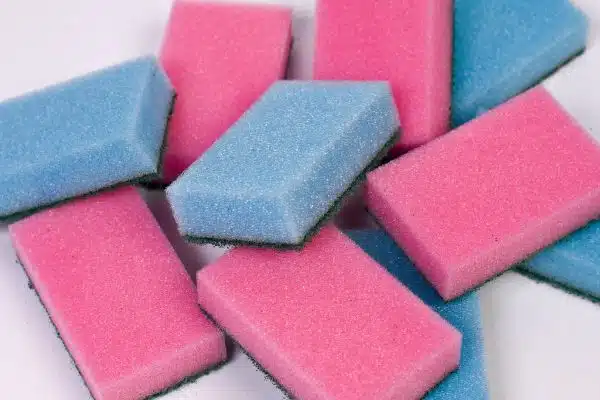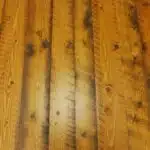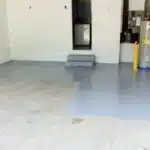Polyurethane is a popular choice for flooring due to its durability, resistance to scratches and abrasions, and ease of maintenance. However, applying polyurethane can be a daunting task for those who are unfamiliar with the process. As an expert in polyurethane flooring, I will provide step-by-step instructions on how to apply polyurethane for floors.
Before beginning the application process, it is important to properly prepare the floor surface. Any existing finish or debris must be removed by sanding or scraping. Once the surface is clean and smooth, it is time to apply the first coat of polyurethane. It is essential to use a high-quality brush or roller that can evenly distribute the finish without leaving bubbles or streaks. Additionally, proper ventilation and protective gear should be worn during application to ensure safety. By following these guidelines, homeowners can achieve beautiful and long-lasting polyurethane floors that will withstand heavy foot traffic and wear over time.
Preparing The Floor Surface
As a polyurethane flooring expert, I understand the importance of properly preparing the floor surface before applying the protective coating. The key to achieving a smooth and durable finish is ensuring that the surface is clean and level. Floor surface preparation involves several steps, including surface level assessment, cleaning, sanding, and scraping.
The first step in preparing the floor surface for polyurethane application is to assess its level. This involves checking for any unevenness or dips in the floor that could affect the final result. It’s essential to use a straight edge or laser level to determine where these areas are so they can be addressed before moving forward with the coating process.
Once you have identified any problem areas, it’s time to clean the floor thoroughly. Any debris or dust left on the surface can interfere with adhesion and ruin your efforts. Use a broom or vacuum cleaner to remove all dirt and dust particles from the area. Additionally, ensure that there are no remaining stains or marks on the floor by using an appropriate cleaning agent.
Transitioning into sanding and scraping, it’s crucial not to underestimate this process’s value as it sets up your polyurethane coat for long-lasting durability. By removing old coatings such as paint or varnish through sanding and scraping, you create a smooth base for better adhesion of your new protective layer. Remember to take necessary precautions during this process by wearing personal protective equipment such as goggles and face masks for safety reasons.
Sanding And Scraping
After the preparatory step of cleaning the floor, sanding and scraping are necessary to ensure a smooth surface for the polyurethane application. Sanding can be done using handheld or power tools. Handheld tools like sandpaper or a sanding block are ideal for small areas, while power tools like an orbital sander are more efficient for larger areas.
Regardless of the tool used, it is important to start with a coarse grit sandpaper and progress to finer grits for a smoother finish. Scraping is also required to remove any stubborn spots or remnants of old finishes. For this task, handheld scrapers work well but care must be taken not to gouge the wood surface.
In addition to achieving a smooth surface, dust collection during sanding and scraping is crucial in ensuring an optimal polyurethane application. Dust can cause bumps and bubbles on the floor’s surface if not properly removed. It is recommended to use a vacuum cleaner with a HEPA filter or attach a dust collection system directly to the sander or scraper.
Moving on from this step, removing existing finish is necessary before proceeding with the polyurethane application process. This step ensures that no existing finish interferes with adhesion and durability of new layers of polyurethane applied on top of it.
Removing Existing Finish
Before applying polyurethane to your floors, it is crucial to remove any existing finish on the surface. Removing the old finish allows the new coating to adhere correctly and provides a smooth surface for application. The most common method for removing an old finish is by using chemical strippers that dissolve the bond between the coating and the wood.
When choosing a chemical stripper, ensure that it is safe for use on hardwood floors, as some strippers can damage the wood. Follow manufacturer instructions when applying the stripper to avoid overexposure or damage to surrounding areas. After application, allow sufficient time for the stripper to work effectively before scraping off the old finish with a putty knife.
Once you have removed most of the old finish with a chemical stripper, use sandpaper grades in increasing order to prepare your floor’s surface for polyurethane application. Start with 80-grit sandpaper and progress through finer grits until you reach 220-grit sandpaper. Sanding opens up pores in wood, allowing polyurethane adhesion while smoothing out any imperfections in your floor’s surface. A well-sanded floor ensures a long-lasting and durable polyurethane coating that will protect your wood from scratches, water damage, and wear and tear.
Transition: Now that you have successfully removed any existing finishes and sanded your floors down to their natural state, it’s time to move on to cleaning the surface thoroughly before applying polyurethane.
Cleaning The Surface
After removing the existing finish, it is crucial to pre-clean the surface before applying polyurethane. The pre-cleaning techniques depend on the type of flooring and the level of dirt that needs to be removed. For instance, if the floor is stained with oil or grease, you can use a degreaser to clean it. On the other hand, if the floor has some adhesive residue from previous carpeting or tile installations, you might need to use a solvent-based cleaner.
Once you have cleaned the floor, you need to prepare the surface for polyurethane application. This includes sanding and filling any gaps or cracks on the floor. Sanding helps in creating an even surface and removing any remaining old finish or stain. It also creates a rough surface that enhances adhesion of the new coating. When sanding, start with coarse-grit sandpaper and progress towards finer grits for a smooth finish.
Surface preparation tips also include checking humidity levels and temperature conditions during application as these factors can affect drying time and final results. To ensure that you achieve a smooth surface after applying polyurethane, it is important to follow manufacturer’s guidelines when mixing and applying products. Moreover, thorough cleaning of equipment used such as brushes or rollers will prevent hardening of polyurethane on them and maintain their quality for future applications.
Transition: Achieving a smooth surface requires careful attention to detail throughout each step of preparing your floors for polyurethane application. In order to ensure optimal results, it is necessary to take extra care in ensuring that your surfaces are fully prepared before beginning any work with your chosen sealant product.
Ensuring A Smooth Surface
A smooth surface is essential when applying polyurethane for floors. The benefits of having a smooth surface are numerous. Not only does it enhance the overall look of your flooring, but it also ensures that the polyurethane adheres evenly and effectively.
Common mistakes to avoid when aiming for a smooth surface include failing to properly prepare the floor before application, rushing through sanding or not sanding enough, and not using the correct grit sandpaper. To avoid these pitfalls, follow these steps:
- Begin by cleaning the floor thoroughly with a vacuum or broom followed by a damp mop.
- Sand the entire floor using progressively finer grits of sandpaper until you reach 220 grit.
- After sanding, clean up any dust with a tack cloth before applying the polyurethane.
As a polyurethane flooring expert, I have seen many cases where inadequate preparation has resulted in uneven surfaces after application. Remember that taking your time during preparation will ultimately lead to better results and save you from costly repairs in the future. In our next section, we will discuss important factors to consider when choosing the right type of polyurethane for your floors.
Choosing The Right Polyurethane
- Polyurethane is a type of finish that is commonly used to protect floors, providing an attractive, protective sheen.
- Different types of polyurethane are available, including water-based and oil-based, each with its own unique properties and characteristics.
- Prior to applying polyurethane, the floor must be properly prepared in order to ensure a successful application.
- Preparation should include sanding and cleaning the floor, as well as removing any old finishes.
- Once the floor is properly prepared, the polyurethane can be applied using a roller or a brush.
- Care should be taken to ensure that the polyurethane is applied evenly and in thin coats, allowing each coat to dry completely before applying additional coats.
Types Of Polyurethane
When choosing the right polyurethane for your floors, it is important to consider the different types available. One popular option is oil-based polyurethane, which offers a durable and glossy finish. However, this type can take longer to dry and emit strong fumes during application. Another option is water-based polyurethane, which dries faster and emits fewer fumes. Additionally, water-based options are often more environmentally friendly and easier to clean up after.
If you decide to go with a water-based polyurethane, there are different formulations to choose from. Some may be applied using a spray application method, which can offer a smoother finish but requires specialized equipment. Others may be applied with rollers or brushes, which can be more accessible for DIY projects. It’s important to follow the manufacturer’s instructions for application methods and drying times to ensure optimal results.
Overall, when selecting a polyurethane for your floors, it’s essential to consider the specific needs of your space and your own preferences. Whether you opt for an oil-based or water-based option or choose between spray application or traditional methods, taking time to research and select the right product will help ensure that your floors look their best and remain protected for years to come.
Preparing The Floor
When it comes to choosing the right polyurethane for your floors, there are several factors to consider. In addition to selecting between oil-based and water-based options, it’s essential to ensure that the floor surface is properly prepared before applying any type of coating. Surface preparation involves cleaning and sanding the floor to create a smooth and even surface that will allow the polyurethane to adhere properly.
Before applying any type of coating, it’s important to thoroughly clean the floor surface. This involves removing any dirt, dust, or debris that may be present. If necessary, you can use a vacuum or broom to remove larger particles followed by a damp mop or cloth to remove smaller particles. Once the surface is clean, you’ll need to sand it down using a fine-grit sandpaper to create a smooth and even surface. This will help ensure that the polyurethane adheres properly and creates an even finish.
Proper surface preparation is essential when applying polyurethane to your floors. By cleaning and sanding the floor surface beforehand, you can create a smooth and even base that will allow the polyurethane to adhere properly and provide optimal protection for your floors. Whether you opt for an oil-based or water-based option, taking time to prepare your floors beforehand will help ensure that your results are long-lasting and beautiful.
Applying Polyurethane
When it comes to polyurethane flooring, choosing the right product is crucial to achieve long-lasting results. However, selecting the appropriate type of polyurethane is not enough. Applying polyurethane correctly is just as essential for a successful finish. One of the most critical aspects of applying polyurethane is utilizing proper application techniques.
Polyurethane application techniques are vital in creating a flawless finish on your floors. When applying polyurethane, use a high-quality brush or applicator to ensure even coverage without any bubbles or streaks. Make sure to apply the product in thin layers and avoid over-saturating the surface as this can cause drips and unevenness. Allow each layer to dry completely before adding another coat. The drying time can vary depending on environmental conditions and type of polyurethane used.
After applying the final coat of polyurethane, allow ample drying time before walking on or moving furniture across the surface. Polyurethane typically takes around 24 hours to dry thoroughly, but this can vary based on humidity levels and temperature conditions. Rushing this step can lead to damage or blemishes on your finished floor surface. Taking time with these steps will help you achieve a beautiful finish that will last for years to come.
In summary, when it comes to choosing and applying polyurethane for flooring, paying attention to details is crucial for success. Properly preparing the surface beforehand and using correct application techniques along with allowing ample drying time are all key factors in achieving beautiful and long-lasting results that will serve your home’s beauty and functionality needs for many years ahead.
Selecting The Appropriate Brush Or Roller
When it comes to applying polyurethane for floors, selecting the appropriate brush or roller is crucial. Using the wrong tool can lead to an uneven application and may even cause bubbles to form in the finish. This section will discuss the different types of brushes and roller techniques that are best suited for applying polyurethane.
There are several types of brushes available for applying polyurethane, including natural bristle, synthetic bristle, and foam brushes. Natural bristle brushes are typically made from animal hair and are best used with oil-based polyurethane. Synthetic bristle brushes, on the other hand, are made from nylon or polyester fibers and are better suited for water-based polyurethane. Foam brushes are ideal for small areas or touch-ups but can leave streaks if not used properly.
Roller techniques also play a significant role in achieving a smooth and even finish when applying polyurethane. The two most common techniques are rolling with the grain and cross-rolling. Rolling with the grain involves rolling in the same direction as the wood grain while cross-rolling involves rolling perpendicular to the grain. Cross-rolling is often used as a final step to ensure an even application of polyurethane.
When it comes to selecting the appropriate brush or roller technique for applying polyurethane, it is important to consider both personal preference and the type of project at hand. By choosing the right tools and techniques, you can achieve a professional-looking finish that will protect your floors for years to come. In considering temperature and humidity, it is important to note that these factors can affect drying time and impact how well the finish adheres to your flooring surface.
Considering The Temperature And Humidity
Now that you have selected the appropriate brush or roller for your polyurethane flooring project, it’s time to consider temperature regulation and humidity control. These two factors are critical in ensuring a successful application of polyurethane for floors. Think of it like baking a cake, where accurate measurements and timing are crucial for the perfect outcome.
To ensure proper temperature regulation, make sure the room is between 60-80 degrees Fahrenheit. If the room is too cold, the polyurethane will not dry properly, while if it’s too hot, bubbles can form on the surface. Investing in a thermometer can help you monitor the temperature accurately throughout the process.
Humidity control is equally important when applying polyurethane for floors. Ideally, your workspace should have a humidity level between 40-60%. Lower humidity can lead to premature drying of the polyurethane, while higher humidity levels can cause blisters on the surface. You can use a dehumidifier or air conditioner to maintain optimal humidity levels.
In summary, regulating temperature and controlling humidity are critical for a successful application of polyurethane for floors. With these factors in check, you’re now ready to move on to applying the first coat of polyurethane.
Applying The First Coat
After preparing the floor, it’s time to apply the first coat of polyurethane. Before you start, make sure that you have all the necessary tools and materials on hand. These include a high-quality brush or roller, sandpaper, tack cloth, and of course, your polyurethane solution. Here are some tips for an even application:
Firstly, avoid bubbles by stirring the polyurethane solution thoroughly but gently before use. Never shake it as this will create air bubbles in the mixture. Also, always apply thin coats of about 2-3 mils thick to prevent air from getting trapped underneath. Use long strokes when applying and try not to overwork the coating.
Secondly, avoid streaks by maintaining a wet edge as you work across the room. Work in sections and maintain a consistent pace throughout. If you notice any drips or runs, immediately smooth them out with your brush or roller. Remember to keep your tools clean throughout the process.
Techniques for reaching difficult areas such as corners and edges require special attention. For corners, use a small brush with light pressure while ensuring that excess polyurethane is removed from the bristles beforehand to prevent dripping. For edges, use an edging tool or pad with rounded edges to ensure that the polyurethane is evenly distributed without leaving lines.
Proper application is important for achieving a durable and long-lasting finish on your floor. Once you have finished applying your first coat of polyurethane, it’s important to maintain proper ventilation in the room during drying time. This ensures that there are no fumes or odors left behind and helps speed up drying time before applying subsequent coats.
Maintaining Proper Ventilation
Proper ventilation is crucial when applying polyurethane to floors. Lack of proper ventilation can cause the accumulation of fumes, which can be toxic and hazardous to health. The importance of maintaining adequate ventilation cannot be overstated. It is essential to have enough fresh air circulation in the room where the polyurethane application is taking place.
There are various ventilation equipment options available that can help maintain appropriate air quality during polyurethane floor application. One such option is using mechanical ventilators, which help suck out stale air from the room while replacing it with fresh air from outside. Another option is using exhaust fans, which draw out contaminated air and circulate clean air into space. It is also vital to keep windows and doors open during the application process to allow for a natural flow of fresh air.
In summary, maintaining proper ventilation during polyurethane floor application is crucial for safeguarding your health and that of others around you. With the right equipment such as mechanical ventilators or exhaust fans and proper airflow through windows and doors, you will have an environment conducive to working safely with these materials. In the subsequent section, we will delve into another critical aspect of ensuring safety during this process – wearing protective gear.
Wearing Protective Gear
Proper ventilation is crucial when applying polyurethane to floors. However, it is equally important to wear appropriate protective gear throughout the process. Choosing the right gear can protect you from harmful fumes and chemicals.
When selecting gear, start with a respirator mask that can filter out vapors and particles. The mask should fit snugly over your nose and mouth to prevent any airborne particles from entering your respiratory system. Additionally, gloves made of nitrile or neoprene are ideal for protecting your hands from chemicals in the polyurethane. Long-sleeved shirts and pants are also recommended to prevent skin contact with the chemicals.
In addition to choosing appropriate gear, there are several other safety precautions to be mindful of when applying polyurethane. Always read the product label carefully before use and follow all instructions provided by the manufacturer. Make sure that the room is well-ventilated and keep away all sources of ignition such as flames or sparks. Furthermore, never leave rags soaked in polyurethane lying around as they can spontaneously combust.
Sanding between coats is an essential step in achieving a smooth finish on your floors. However, it is important to wait for each coat to dry completely before sanding it down lightly with fine-grit sandpaper. This will remove any bubbles or imperfections on the surface of the coating, allowing for better adhesion of subsequent coats. Remember to always wear protective gear during sanding as well, including a dust mask and eye protection. By taking these precautions, you can ensure a beautiful and safe outcome for your flooring project.
Sanding Between Coats
After applying the first coat of polyurethane, it is crucial to sand the entire floor before applying subsequent coats. Sanding between coats ensures that each layer of polyurethane adheres correctly and provides a smooth and even finish. However, there are two different types of sanding: wet sanding and dry sanding.
Wet sanding involves using water to lubricate the surface while sanding. Wet sandpaper removes debris from the surface as it sands, which produces a smoother finish compared to dry sandpaper. It also reduces dust and prevents clogging of the sandpaper grits. Alternatively, dry sanding uses regular sandpaper without any added liquid or moisture.
When choosing the right type of sandpaper grit for polyurethane floors, start with a coarse grit paper such as 80-grit to remove any rough or uneven areas on the floor’s surface. Then move on to finer grits such as 120-grit and 220-grit to create a smoother finish. Remember that using too coarse of a grit can damage your floor, while using too fine can result in an insufficiently prepared surface that won’t allow the new coat to adhere properly.
Now that you understand how to properly prepare your floors through wet or dry sanding and choosing appropriate grits let’s move on to applying additional coats of polyurethane.
Applying Additional Coats
- Sanding between coats is essential in order to ensure that a smooth, even finish is achieved.
- The right finish must be chosen in order to ensure that the desired look is achieved.
- It is important to consider factors such as the amount of traffic the surface will receive and the environment in which the surface will be located.
- To ensure an even finish, the polyurethane should be applied in a thin, even layer, with extra attention paid to edges and corners.
- Care should be taken to avoid creating bubbles or droplets, as these can be difficult to remove once the polyurethane has dried.
- Applying multiple thin coats is preferable to applying a single thick coat, as this will help to ensure an even, professional finish.
Sanding In Between Coats
Choosing the right sandpaper is crucial when sanding in between coats of polyurethane. It is recommended to use a fine grit sandpaper, such as 220 or higher, to avoid damaging the previous coat. A rougher grit sandpaper can cause scratches and imperfections on the surface, which will be visible after the final coat of polyurethane has been applied.
Timing between coats is also important when applying additional coats of polyurethane. It is best to wait until the previous coat has dried completely before sanding and applying the next coat. This will usually take anywhere from 12-24 hours depending on the type of polyurethane used and environmental conditions. Applying a new coat too soon can result in a sticky or uneven finish.
Incorporating these tips into your application process will ensure a smooth and flawless finish on your hardwood floors. Remember to always choose a fine grit sandpaper when sanding in between coats and allow enough time for each coat to dry completely before proceeding with the next one. With patience and attention to detail, you can achieve beautiful, long-lasting results for years to come.
Choosing The Right Finish
Choosing the right finish for your hardwood floors is just as important as choosing the right sandpaper and allowing enough time between coats when applying additional coats of polyurethane. Polyurethane finishes offer a range of benefits, including durability and protection against scratches, stains, and water damage. When comparing polyurethane finishes, it’s important to consider factors such as gloss level, ease of application, and drying time.
There are three main types of polyurethane finishes: oil-based, water-based, and moisture-cured. Oil-based finishes are known for their amber hue and longer drying time, while water-based finishes dry clear and have a shorter drying time. Moisture-cured finishes are the most durable but require professional application due to their high toxicity. Each type of finish has its own benefits and drawbacks, so it’s important to choose the one that best suits your specific needs.
When selecting a polyurethane finish for your hardwood floors, consider factors such as the room’s traffic level, desired gloss level, and personal preference. A high-gloss finish may be more suitable for low-traffic areas with minimal exposure to sunlight, while a matte or satin finish may be better suited for high-traffic areas or rooms with large windows. By taking these factors into consideration and consulting with a flooring expert if necessary, you can select the perfect polyurethane finish to protect your hardwood floors for years to come.
Applying The Finish Evenly
When applying additional coats of polyurethane to your hardwood floors, it’s important to ensure that the finish is being applied evenly. This step can be challenging for many homeowners, but with the right technique tips and troubleshooting knowledge, you can achieve a smooth and consistent finish.
One of the most important tips for applying polyurethane evenly is to use a high-quality brush or roller. This will help prevent lap marks and streaks that can occur when using low-quality tools. Additionally, it’s important to apply the finish in thin, even coats, allowing each layer to dry completely before applying another coat. This will help prevent bubbling or peeling of the finish.
If you encounter any issues during the application process, such as drips or bubbles in the finish, don’t panic. There are several troubleshooting techniques that can help salvage your project. For example, lightly sanding the affected area between coats can help smooth out any imperfections. Additionally, using a foam brush instead of a traditional bristle brush may help prevent bubbles from forming in the first place.
By following these technique tips and being prepared to troubleshoot any issues that arise, you can ensure that your polyurethane finish is applied evenly and looks beautiful for years to come. Remember to take your time during this process and consult with a flooring expert if necessary to ensure that you’re achieving optimal results.
Allowing For Drying Time
After applying additional coats of polyurethane, it is important to allow for sufficient drying time before using the floor. Not allowing for proper drying time can result in a variety of issues, such as a tacky or uneven finish. Therefore, it is crucial to follow recommended drying times and tips for minimizing drying time.
Tips for minimizing drying time include ensuring proper ventilation in the room, keeping the room temperature between 60-80°F, and using fans to circulate air over the surface of the floor. It is also important to avoid walking on the floor or placing furniture on it until it has fully dried. While some may be tempted to speed up the process by using heaters or other tools, this can actually cause more harm than good by disrupting the evenness of the finish.
Common mistakes to avoid during the drying process include not following recommended drying times, not allowing for proper ventilation, and touching or moving furniture too soon after application. By taking these precautions and following best practices, you can ensure that your newly finished floors will look stunning and last for years to come. With patience and care during this final step of the process, you will soon be able to enjoy the long-lasting results of your efforts.
Enjoying The Long-Lasting Results
Now that you have successfully applied polyurethane to your floors, it is time to enjoy the benefits of this durable and long-lasting finish. Whether you have chosen a water-based or oil-based polyurethane, you can rest assured that your floors are protected from scratches, stains and wear-and-tear for years to come. Polyurethane provides a strong barrier against moisture and prevents wood from expanding or contracting, thereby maintaining its original shape.
One of the many benefits of polyurethane is that it comes in different finishes such as high-gloss, semi-gloss or satin. Choosing the right finish depends on personal preference and the level of traffic in your home. High-gloss finishes are ideal for areas with low traffic such as bedrooms while satin finishes are better suited for high-traffic areas like living rooms and hallways. The choice of finish will also affect the final look of your floors so take time to consider all options before making a decision.
To maintain the beauty and longevity of your newly coated floors, it is important to follow proper care instructions such as regular sweeping and mopping with a damp cloth. Avoid using harsh chemicals or abrasive cleaners that can damage the finish. With proper care, your polyurethane-coated floors will remain beautiful for years to come, providing a welcoming environment for family and friends alike.
Conclusion
Polyurethane is a popular choice for floor finishing due to its durability and resistance to wear and tear. However, improper application can lead to unsightly results. Before applying polyurethane, it is important to prepare the surface by sanding and scraping away any existing finish. Cleaning the surface thoroughly ensures a smooth application of the polyurethane.
Sanding between coats allows for better adhesion and a smoother finish. Applying additional coats will not only enhance the appearance of the floor but also increase its longevity. It is imperative that you allow adequate drying time before walking on or placing furniture on the newly finished surface.
As an expert in polyurethane flooring, I cannot stress enough the importance of proper preparation and application techniques when it comes to achieving long-lasting results. Nothing compares to the satisfaction of seeing a beautifully finished floor that has been treated with care and precision. By following these guidelines, you can ensure that your floors are protected against everyday wear and tear, while maintaining their aesthetic appeal for years to come. Remember, investing in quality flooring is an investment in your home or business – one that will pay off in countless ways over time.
Image Credits
- “Plain blue and pink polyurethane kitchen sponges” by Horia Varlan (featured)





























